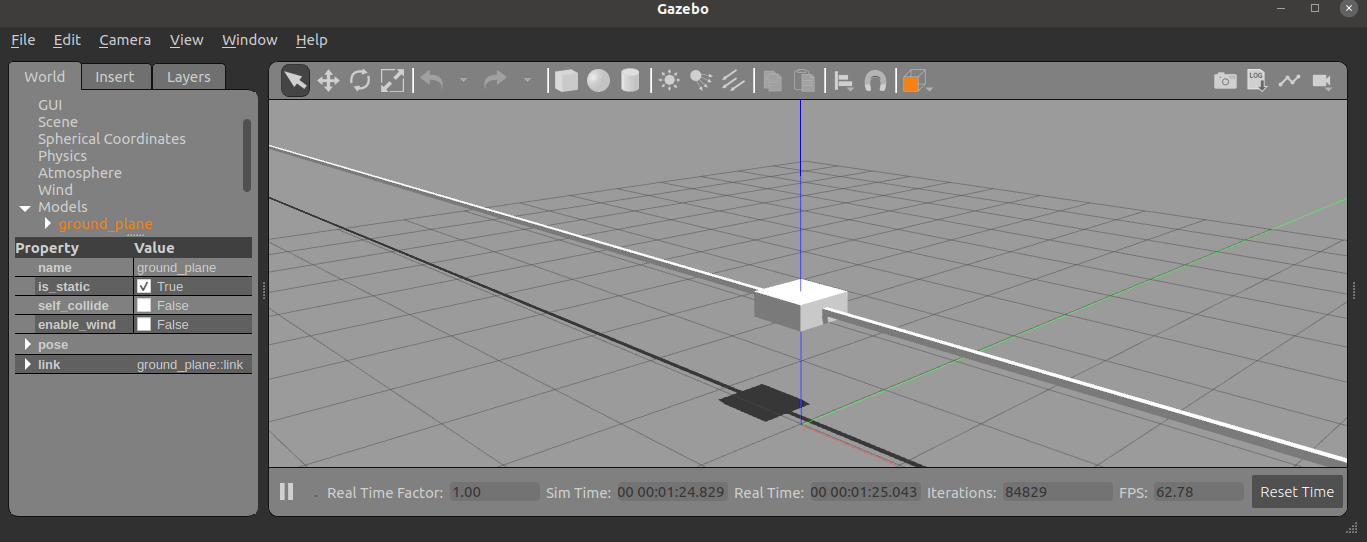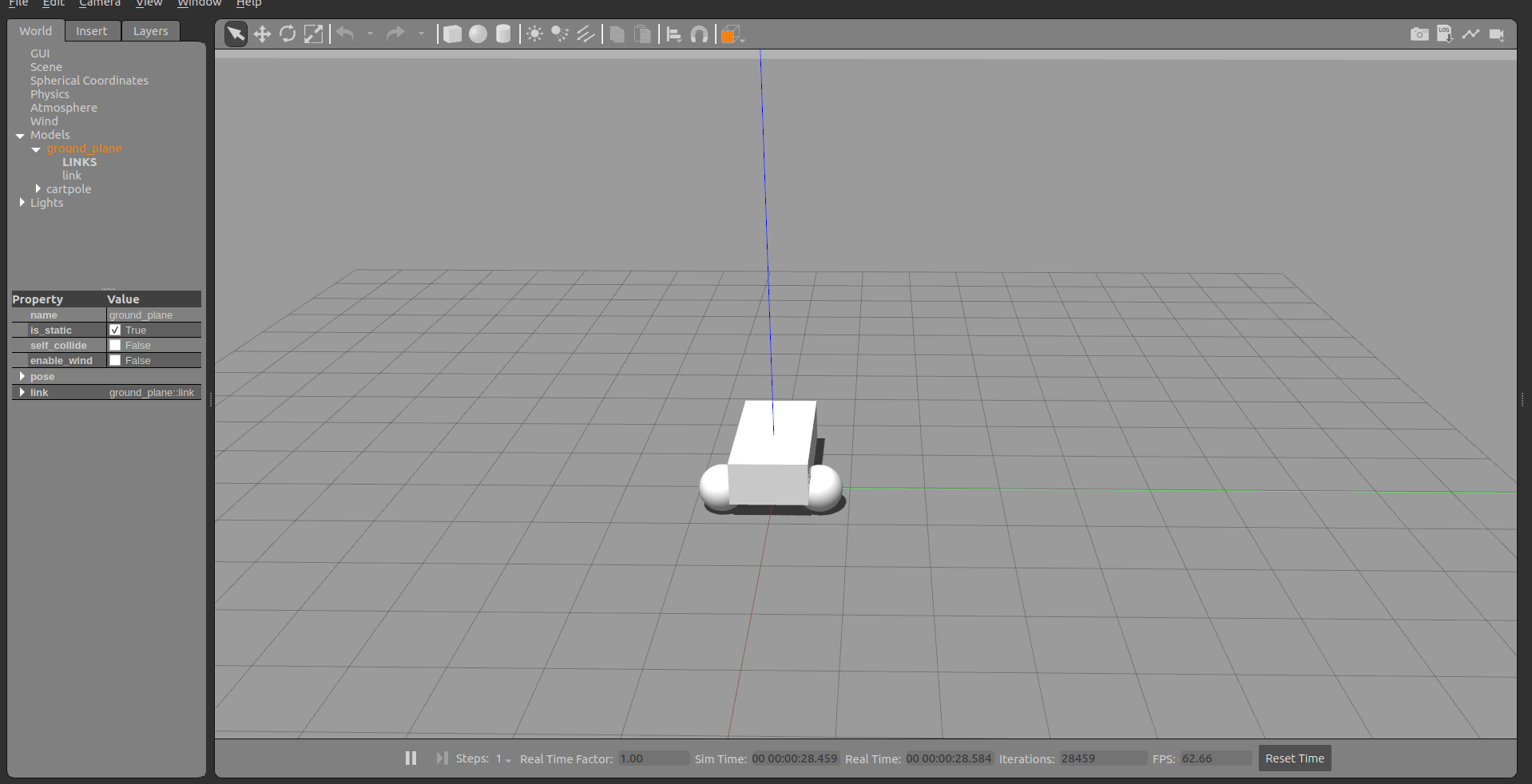Repository Summary
| Checkout URI | https://github.com/ros-simulation/gazebo_ros2_control.git |
| VCS Type | git |
| VCS Version | humble |
| Last Updated | 2025-05-18 |
| Dev Status | DEVELOPED |
| Released | RELEASED |
| Tags | No category tags. |
| Contributing |
Help Wanted (0)
Good First Issues (0) Pull Requests to Review (0) |
Packages
| Name | Version |
|---|---|
| gazebo_ros2_control | 0.4.11 |
| gazebo_ros2_control_demos | 0.4.11 |
README
gazebo_ros2_control
This is a ROS 2 package for integrating the ros2_control controller architecture with the Gazebo Classic simulator.
Gazebo Classic went end-of-life in January of 2025. There won’t be any updates to gazebo_ros2_control anymore.
We strongly recommend all users migrate from Gazebo Classic (numbered releases) to modern Gazebo (formerly known as Ignition 3, lettered releases). To use ros2_control with newer versions of Gazebo take a look at gz_ros2_control.
Furthermore, Gazebo Classic is not released to Ubuntu Noble. As a consequence, gazebo_ros2_control never was released to Jazzy and Rolling/Noble.
This package provides a Gazebo plugin which instantiates a ros2_control controller manager and connects it to a Gazebo model.
Documentation
See the documentation file or control.ros.org.
Build status
| ROS 2 Distro | Branch | Build status | Documentation |
|---|---|---|---|
| Rolling | master |
Documentation | |
| Jazzy | master |
Documentation | |
| Humble | humble |
Documentation |
CONTRIBUTING
Repository Summary
| Checkout URI | https://github.com/ros-simulation/gazebo_ros2_control.git |
| VCS Type | git |
| VCS Version | galactic |
| Last Updated | 2022-11-25 |
| Dev Status | DEVELOPED |
| Released | RELEASED |
| Tags | No category tags. |
| Contributing |
Help Wanted (0)
Good First Issues (0) Pull Requests to Review (0) |
Packages
| Name | Version |
|---|---|
| gazebo_ros2_control | 0.2.0 |
| gazebo_ros2_control_demos | 0.2.0 |
README
gazebo_ros2_control
| ROS2 Distro | Build Status | Package build |
|---|---|---|
 |
This is a ROS 2 package for integrating the ros2_control controller architecture with the Gazebo simulator.
This package provides a Gazebo plugin which instantiates a ros2_control controller manager and connects it to a Gazebo model.
Usage
This repository contains the contents for testing gazebo_ros2_control
It is running Gazebo and some other ROS 2 nodes.
Video + Pictures


Running
Modifying or building your own
cd Docker
docker build -t gazebo_ros2_control .
To run the demo
Using Docker
Docker allows us to run the demo without GUI if we don’t configure it properly. The following command runs the demo without GUI:
docker run -it --rm --name gazebo_ros2_control_demo --net host gazebo_ros2_control ros2 launch gazebo_ros2_control_demos cart_example_position.launch.py gui:=false
The in your local machine you can run the Gazebo client:
gzclient
Using Rocker
To run the demo with GUI we are going to use rocker which is a tool to run docker images with customized local support injected for things like nvidia support. And user id specific files for cleaner mounting file permissions. You can install this tool with the following instructions.
The following command will launch Gazebo:
rocker --x11 --nvidia --name gazebo_ros2_control_demo gazebo_ros2_control:latest
The following commands allow to move the cart in the rail:
docker exec -it gazebo_ros2_control_demo bash
source /home/ros2_ws/install/setup.bash
ros2 run gazebo_ros2_control_demos example_position
Add ros2_control tag to a URDF
To use ros2_control with your robot, you need to add some additional elements to your URDF.
You should include the tag <ros2_control> to access and control the robot interfaces. We should
include
- a specific
<plugin>for our robot -
<joint>tag including the robot controllers: commands and states.
<ros2_control name="GazeboSystem" type="system">
<hardware>
<plugin>gazebo_ros2_control/GazeboSystem</plugin>
</hardware>
<joint name="slider_to_cart">
<command_interface name="effort">
<param name="min">-1000</param>
<param name="max">1000</param>
</command_interface>
<state_interface name="position"/>
<state_interface name="velocity"/>
<state_interface name="effort"/>
</joint>
</ros2_control>
Using mimic joints in simulation
To use mimic joints in gazebo_ros2_control you should define its parameters to your URDF.
We should include:
-
<mimic>tag to the mimicked joint ([detailed manual(https://wiki.ros.org/urdf/XML/joint))
File truncated at 100 lines see the full file
CONTRIBUTING
Repository Summary
| Checkout URI | https://github.com/ros-simulation/gazebo_ros2_control.git |
| VCS Type | git |
| VCS Version | foxy |
| Last Updated | 2023-06-07 |
| Dev Status | DEVELOPED |
| Released | RELEASED |
| Tags | No category tags. |
| Contributing |
Help Wanted (0)
Good First Issues (0) Pull Requests to Review (0) |
Packages
| Name | Version |
|---|---|
| gazebo_ros2_control | 0.1.1 |
| gazebo_ros2_control_demos | 0.1.1 |
README
gazebo_ros2_control
| ROS2 Distro | Build Status | Package build |
|---|---|---|
 |
This is a ROS 2 package for integrating the ros2_control controller architecture with the Gazebo simulator.
This package provides a Gazebo plugin which instantiates a ros2_control controller manager and connects it to a Gazebo model.
Usage
This repository contains the contents for testing gazebo_ros2_control
It is running Gazebo and some other ROS 2 nodes.
Video + Pictures


Running
Modifying or building your own
cd Docker
docker build -t gazebo_ros2_control .
To run the demo
Using Docker
Docker allows us to run the demo without GUI if we don’t configure it properly. The following command runs the demo without GUI:
docker run -it --rm --name gazebo_ros2_control_demo --net host gazebo_ros2_control ros2 launch gazebo_ros2_control_demos cart_example_position.launch.py gui:=false
The in your local machine you can run the Gazebo client:
gzclient
Using Rocker
To run the demo with GUI we are going to use rocker which is a tool to run docker images with customized local support injected for things like nvidia support. And user id specific files for cleaner mounting file permissions. You can install this tool with the following instructions.
The following command will launch Gazebo:
rocker --x11 --nvidia --name gazebo_ros2_control_demo gazebo_ros2_control:latest
The following commands allow to move the cart in the rail:
docker exec -it gazebo_ros2_control_demo bash
source /home/ros2_ws/install/setup.bash
ros2 run gazebo_ros2_control_demos example_position
Add ros2_control tag to a URDF
To use ros2_control with your robot, you need to add some additional elements to your URDF.
You should include the tag <ros2_control> to access and control the robot interfaces. We should
include
- a specific
<plugin>for our robot -
<joint>tag including the robot controllers: commands and states.
<ros2_control name="GazeboSystem" type="system">
<hardware>
<plugin>gazebo_ros2_control/GazeboSystem</plugin>
</hardware>
<joint name="slider_to_cart">
<command_interface name="effort">
<param name="min">-1000</param>
<param name="max">1000</param>
</command_interface>
<state_interface name="position"/>
<state_interface name="velocity"/>
<state_interface name="effort"/>
</joint>
</ros2_control>
Using mimic joints in simulation
To use mimic joints in gazebo_ros2_control you should define its parameters to your URDF.
We should include:
-
<mimic>tag to the mimicked joint ([detailed manual(https://wiki.ros.org/urdf/XML/joint))
File truncated at 100 lines see the full file
CONTRIBUTING
Repository Summary
| Checkout URI | https://github.com/ros-simulation/gazebo_ros2_control.git |
| VCS Type | git |
| VCS Version | iron |
| Last Updated | 2024-11-01 |
| Dev Status | DEVELOPED |
| Released | RELEASED |
| Tags | No category tags. |
| Contributing |
Help Wanted (0)
Good First Issues (0) Pull Requests to Review (0) |
Packages
| Name | Version |
|---|---|
| gazebo_ros2_control | 0.6.8 |
| gazebo_ros2_control_demos | 0.6.8 |
README
gazebo_ros2_control
This is a ROS 2 package for integrating the ros2_control controller architecture with the Gazebo Classic simulator.
Gazebo Classic goes end-of-life in January of 2025. We strongly recommend all users migrate from Gazebo Classic (numbered releases) to modern Gazebo (formerly known as Ignition 3, lettered releases) before January 2025.
Furthermore, Gazebo Classic is not released to Ubuntu Noble. As a consequence, gazebo_ros2_control won’t be released for Jazzy and Rolling anymore.
To use ros2_control with newer versions of Gazebo take a look at gz_ros2_control.
This package provides a Gazebo plugin which instantiates a ros2_control controller manager and connects it to a Gazebo model.
Documentation
See the documentation file or control.ros.org.
Build status
| ROS 2 Distro | Branch | Build status | Documentation |
|---|---|---|---|
| Rolling | master |
n/a | Documentation |
| Jazzy | master |
n/a | Documentation |
| Iron | iron |
Documentation | |
| Humble | humble |
Documentation |
